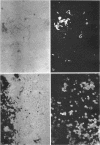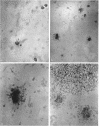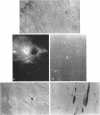Abstract
Transitional forms and round bodies of Haemophilus influenzae were identified in sputa from patients with chronic bronchitis who were receiving penicillin therapy for H. influenzae infections. In vitro growth of L forms of this organism was induced by penicillin and glycine and was studied for comparison with development in vivo. Variant forms demonstrated in sputum were similar to variant forms observed in penicillin-induced L colonies. Recurrence of infection after cessation of therapy was related to reversion of persisting L forms to bacillary forms. That these forms were derived from H. influenzae was established by direct staining with fluoresceinlabeled specific antibody. This demonstration that transitional forms and round bodies of H. influenzae occurred in vivo suggests that L forms of bacteria may be significant in chronic or recurrent infections.
Full text
PDF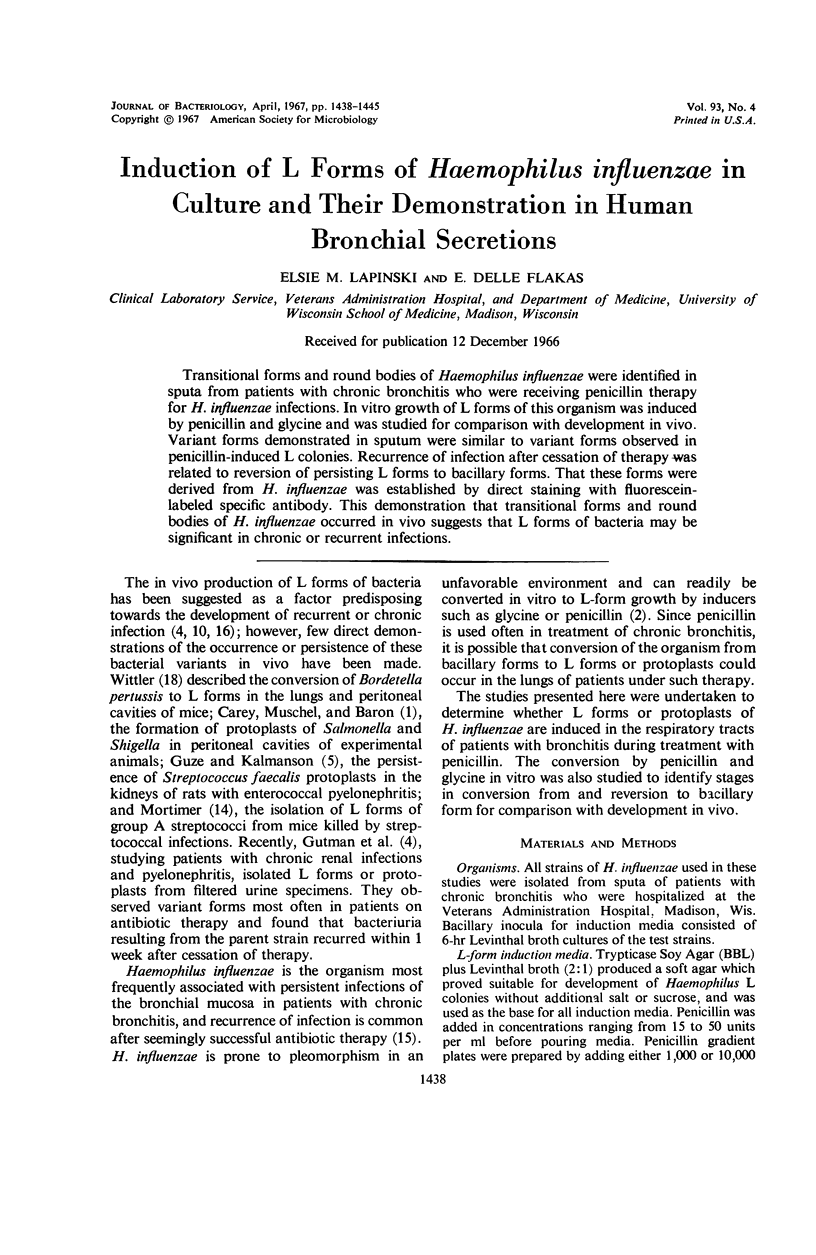


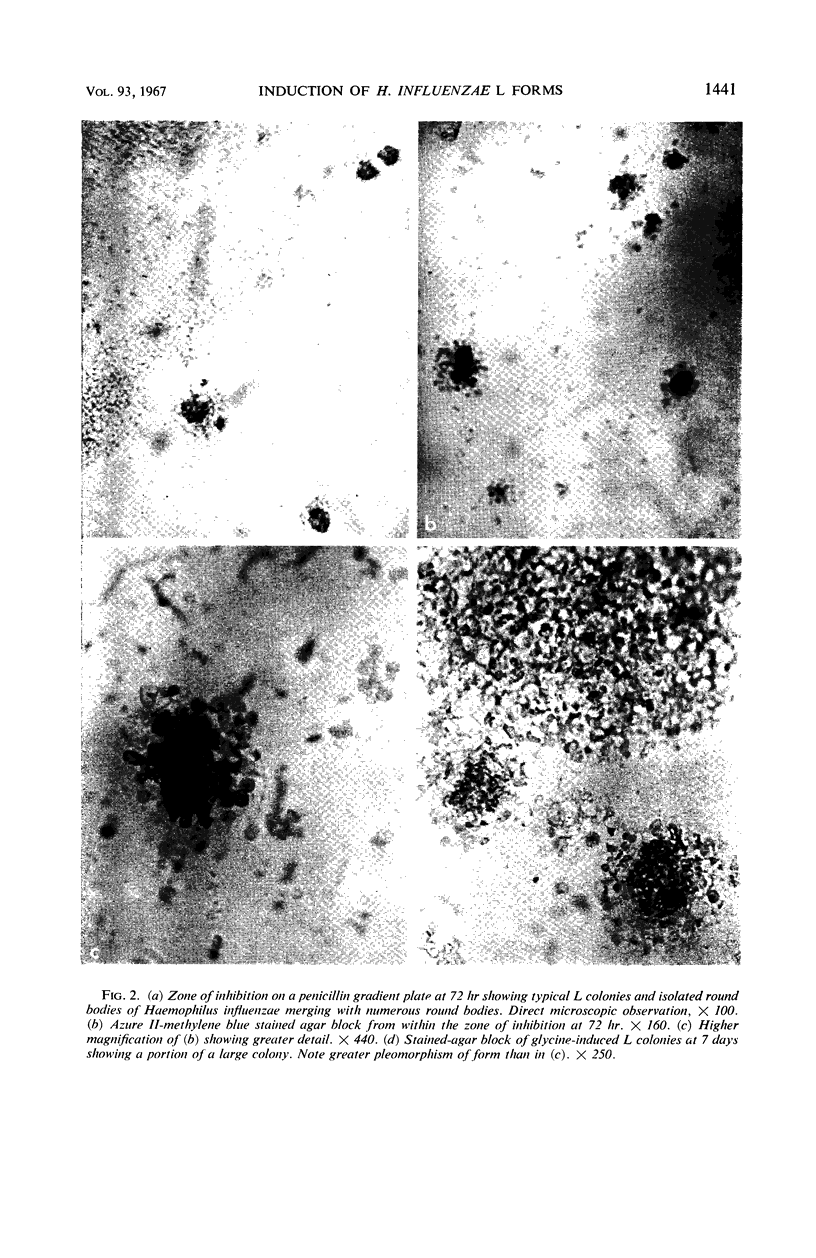
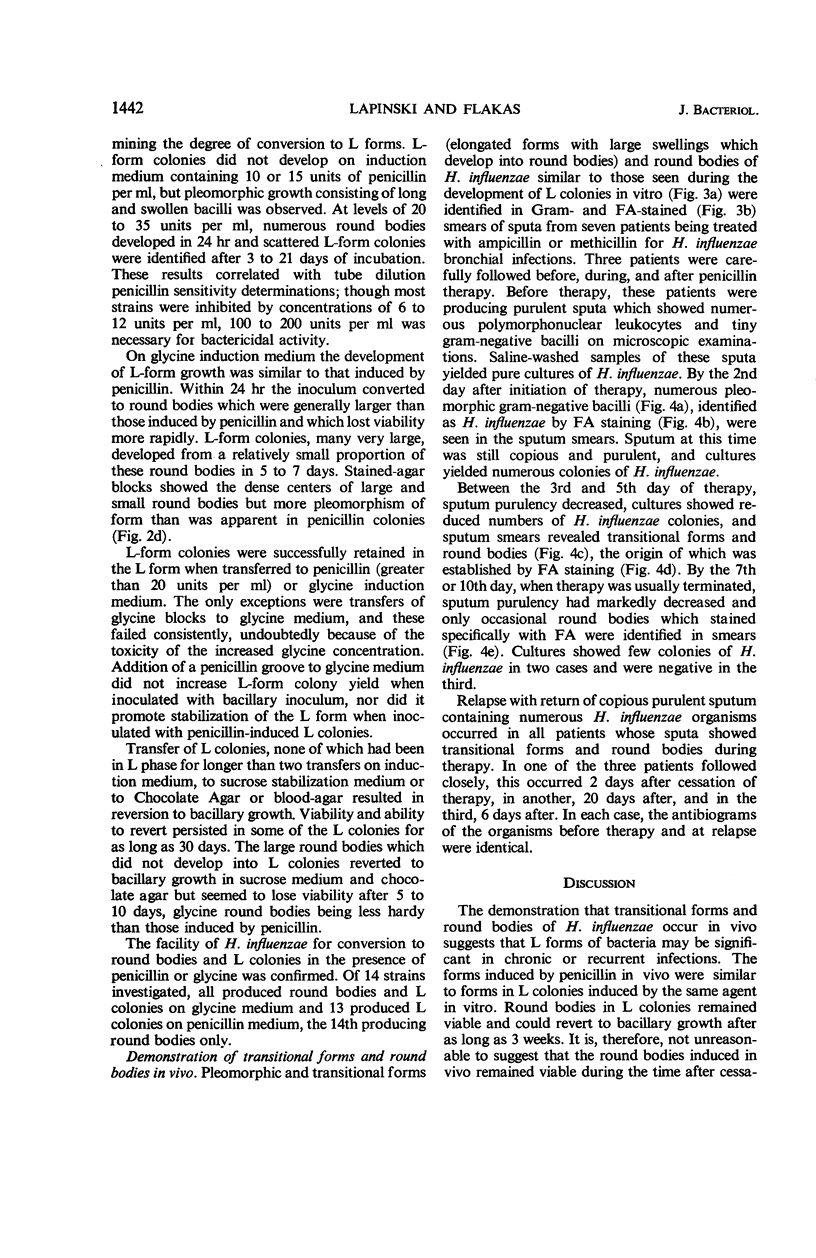
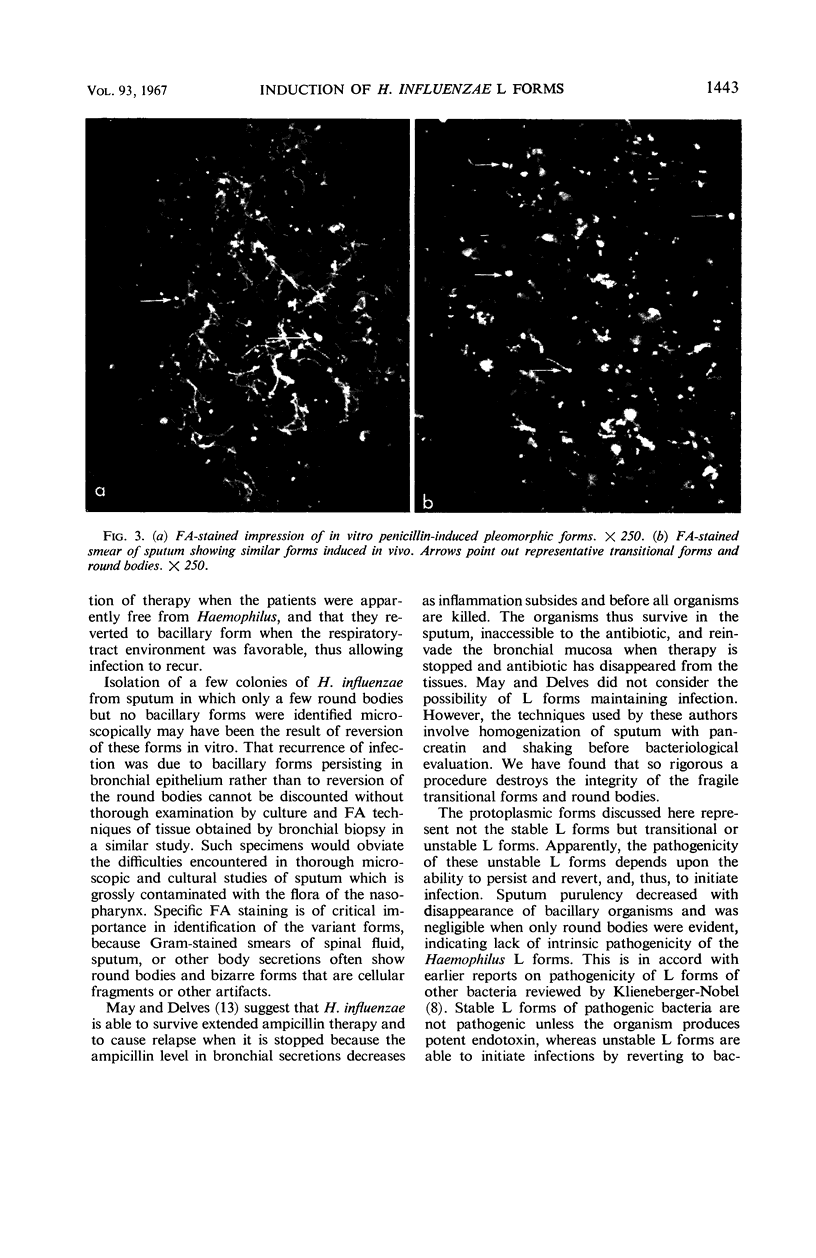
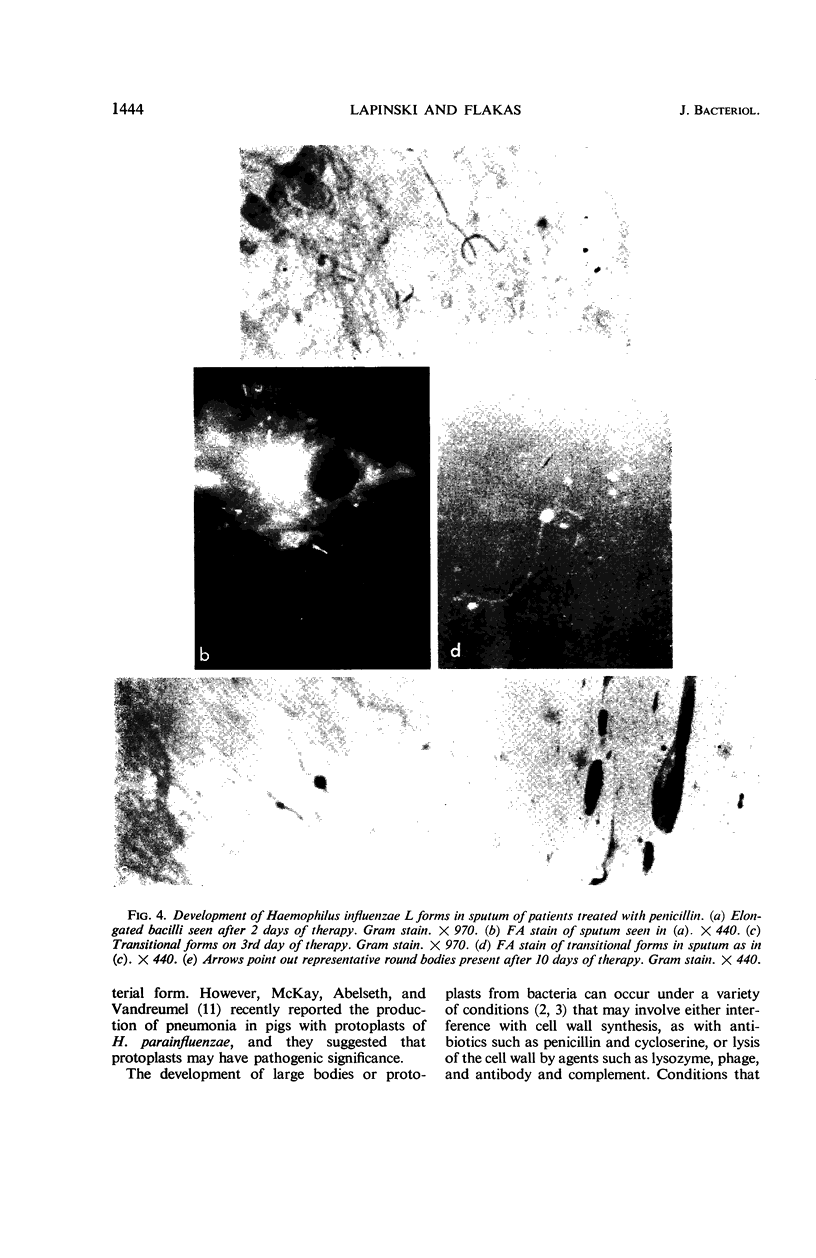
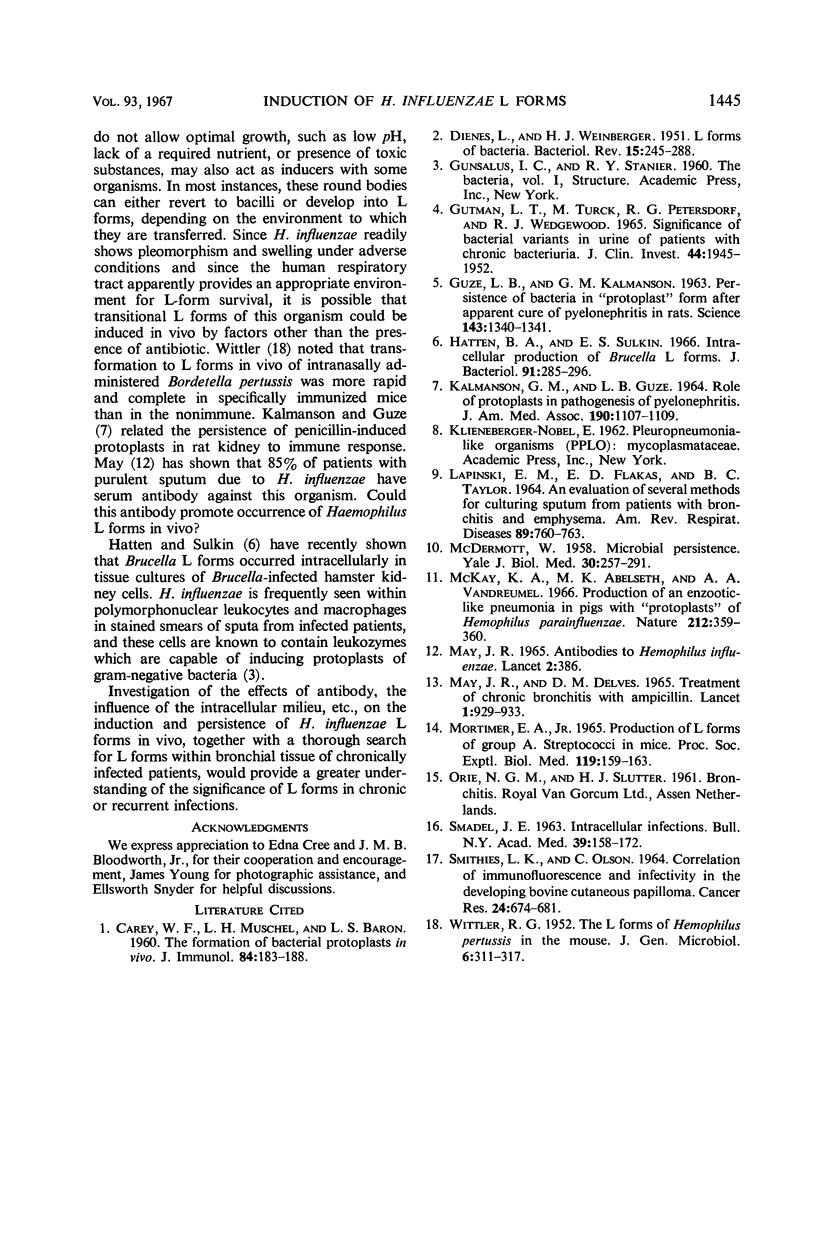
Images in this article
Selected References
These references are in PubMed. This may not be the complete list of references from this article.
- DIENES L., WEINBERGER H. J. The L forms of bacteria. Bacteriol Rev. 1951 Dec;15(4):245–288. doi: 10.1128/br.15.4.245-288.1951. [DOI] [PMC free article] [PubMed] [Google Scholar]
- Gutman L. T., Turck M., Petersdorf R. G., Wedgwood R. J. Significance of bacterial variants in urine of patients with chronic bacteriuria. J Clin Invest. 1965 Dec;44(12):1945–1952. doi: 10.1172/JCI105300. [DOI] [PMC free article] [PubMed] [Google Scholar]
- Guze L. B., Kalmanson G. M. Persistence of Bacteria in "Protoplast" Form after Apparent Cure of Pyelonephritis in Rats. Science. 1964 Mar 20;143(3612):1340–1341. doi: 10.1126/science.143.3612.1340. [DOI] [PubMed] [Google Scholar]
- Hatten B. A., Sulkin S. E. Intracellular Production of Brucella L Forms I. Recovery of L Forms from Tissue Culture Cells Infected with Brucella abortus. J Bacteriol. 1966 Jan;91(1):285–296. doi: 10.1128/jb.91.1.285-296.1966. [DOI] [PMC free article] [PubMed] [Google Scholar]
- KALMANSON G. M., GUZE L. B. ROLE OF PROTOPLASTS IN PATHOGENESIS OF PYELONEPHRITIS. JAMA. 1964 Dec 28;190:1107–1109. doi: 10.1001/jama.1964.03070260019004. [DOI] [PubMed] [Google Scholar]
- LAPINSKI E. M., FLAKAS E. D., TAYLOR B. C. AN EVALUATION OF SOME METHODS FOR CULTURING SPUTUM FROM PATIENTS WITH BRONCHITIS AND EMPHYSEMA. Am Rev Respir Dis. 1964 May;89:760–763. doi: 10.1164/arrd.1964.89.5.760. [DOI] [PubMed] [Google Scholar]
- MAY J. R., DELVES D. M. TREATMENT OF CHRONIC BRONCHITIS WITH AMPICILLIN: SOME PHARMACOLOGICAL OBSERVATION. Lancet. 1965 May 1;1(7392):929–933. doi: 10.1016/s0140-6736(65)91253-5. [DOI] [PubMed] [Google Scholar]
- MORTIMER E. A., Jr PRODUCTION OF L FORMS OF GROUP A STREPTOCOCCI IN MICE. Proc Soc Exp Biol Med. 1965 May;119:159–163. doi: 10.3181/00379727-119-30125. [DOI] [PubMed] [Google Scholar]
- McDERMOTT W. Microbial persistence. Yale J Biol Med. 1958 Feb;30(4):257–291. [PMC free article] [PubMed] [Google Scholar]
- McKay K. A., Abelseth M. K., Vandreumel A. A. Production of an enzootic-like pneumonia in pigs with "protoplasts" of Haemophilus parainfluenzae. Nature. 1966 Oct 22;212(5060):359–360. doi: 10.1038/212359a0. [DOI] [PubMed] [Google Scholar]
- SMADEL J. E. Intracellular infections. Bull N Y Acad Med. 1963 Mar;39:158–172. [PMC free article] [PubMed] [Google Scholar]
- SMITHIES L. K., OLSON C. CORRELATION OF IMMUNOFLUORESCENCE AND INFECTIVITY IN THE DEVELOPING BOVINE CUTANEOUS PAPILLOMA. Cancer Res. 1964 May;24:674–681. [PubMed] [Google Scholar]
- WITTLER R. G. The L-form of Haemophilus pertussis in the mouse. J Gen Microbiol. 1952 May;6(3-4):311–317. doi: 10.1099/00221287-6-3-4-311. [DOI] [PubMed] [Google Scholar]



